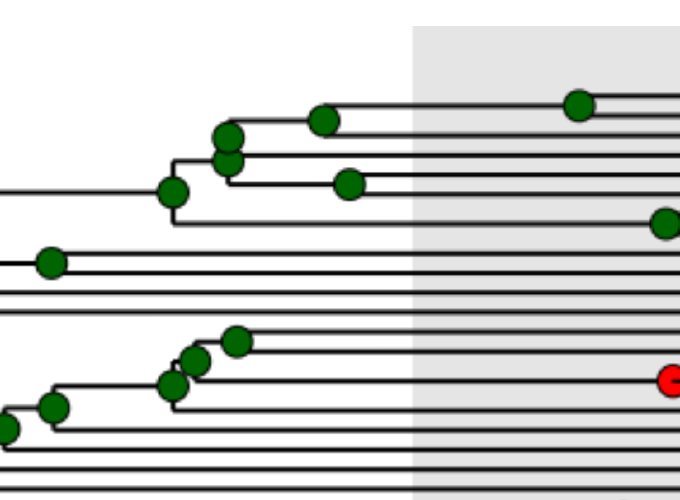Mitochondrial genome fragmentation is correlated with increased rates of molecular evolution
Abstract
While mitochondrial genome content and organization is quite diverse across all Eukaryotes, most bilaterian animal mitochondrial genomes (mitogenomes) exhibit highly conserved gene content and organisation, with genes typically encoded on a single circular chromosome. However, many species of parasitic lice (Insecta: Phthiraptera) are among the notable exceptions, having mitogenomes fragmented into multiple circular chromosomes. To better understand the process of mitogenome fragmentation, we conducted a large-scale genomic study of a major group of lice, Amblycera, with extensive taxon sampling. Analyses of the evolution of mitogenome structure across a phylogenomic tree of 90 samples from 53 genera revealed evidence for multiple independent origins of mitogenome fragmentation, some inferred to have occurred less than five million years ago. We leveraged these many independent origins of fragmentation to compare the rates of DNA substitution and gene rearrangement, specifically contrasting branches with fragmented and non-fragmented mitogenomes. We found that lineages with fragmented mitochondrial genomes had significantly higher rates of mitochondrial sequence evolution. In addition, lineages with fragmented mitochondrial genomes were more likely to have mitogenome gene rearrangements than those with single-chromosome mitochondrial genomes. By combining phylogenomics and mitochondrial genomics we provide a detailed portrait of mitogenome evolution across this group of insects with a remarkably unstable mitogenome structure, identifying processes of molecular evolution that are correlated with mitogenome fragmentation.
